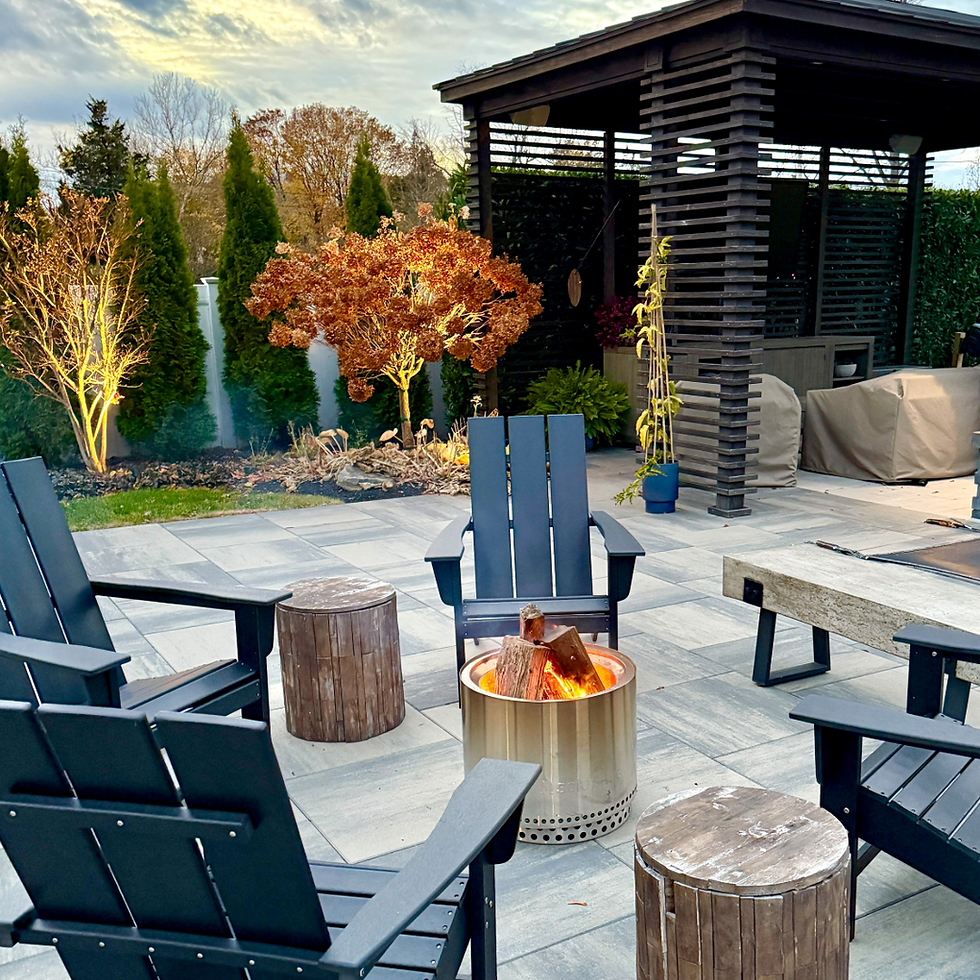Tips for Adding Ornamental Grasses to Your Landscape
- Rebekah
- Sep 12, 2019
- 4 min read
Updated: Jan 9
It's almost fall! And ornamental grasses look amazing in landscapes in fall. Today we are sharing ideas for where to plant them and quick tips on how to care for them.
But first, why plant ornamental grasses in your landscape?
When planted in the correct space, ornamental grasses add so much texture and interest to a garden. Graceful in motion and available in many striking colors, ornamental grasses come in varieties ranging from upright and slender to short and mounded.
Ornamental grasses, for the most part, are disease and pest-free, making them easy-to-care for. Also, once established, many varieties are drought tolerant (now, that doesn't mean plant it and never water it- you still need to water it regularly the first year it is planted. This just means in periods of hot heat with little rain, once it is established, it is more tolerant of those conditions than other plants).
Ideas on Where to Plant Them
Ornamental grasses are very versatile when it comes to where to plant them. They can be used to anchor a landscape along with evergreens or trees. Another way to plant them is by using them continuously mixed in around a landscape to help achieve a cohesive look. Alternatively, they can be used as accents, providing a vibrant splash of beautiful texture and color. Planting them singularly makes them an exclamation point in a garden landscape. Planting them in a mass planting allows them to carry your eye gracefully throughout the garden space.
Ornamental grasses work well in many different landscape designs, including cottage, Asian, modern, and traditional spaces.
Here are 8 Different Ways to Use Ornamental Grasses in a Home Garden:
1. As a way to add texture to your garden. If your current garden space feels a little lack-luster, adding ornamental grasses may be just what it needs to add a wow-factor. These grasses mix in beautifully with perennials and annuals, as well as flowering shrubs such as hydrangeas. Know what variety you are purchasing at the Garden Center to know how tall it gets to make sure you plant it in the right location. Grasses are stunning in fall and add a lot of interest at all times of the year.
2. Create autumn interest. When many annuals, perennials, and flowering shrubs are looking spent and tired at the end of summer (they have a right to be tired, right? They gave us flowers all spring and/or summer!), ornamental grasses are ready to show off their beauty. Plant them near summer-flowering plants to spruce up that area of the garden in fall.
3. As a privacy screen. Taller varieties work best for a privacy screen. Some grasses, such as 'Gracillimus' Miscanthus (shown above as a screen) can grow to be 8' tall. Keep in mind that ornamental grasses thrive best when they are pruned in late winter, so there would be a few months where you would not have that screen. Ornamental grasses are fast growers, so your screen would not be gone for long.

4. As a ground cover (small, mounding varieties work well in this setting). They will create dramatic interest and cut back on weeding.
5. Create colorful container pots. You can use small ornamental grasses (such as 'Little Bunny' Pennisetum) to add texture in a container pot with other accents (we love mixing in trailing Pansies, Coleus, and Dusty Miller for an early autumn display. You can even add a small pumpkin to the mix!). You can also use tall, upright varieties to create a formal look to your container pots. Use two planters to achieve this symmetrical look and place one on each side of your front entry, for example.
6. Soften hardscaping. Add ornamental grasses near your pool or in an area that has a lot of concrete. It will visually soften the space, making it more inviting and will create a naturalistic look.
7. Use them throughout your landscape as an accent. As we mentioned above, tucking the same variety of ornamental grass here and there throughout your garden can help create a very cohesive look.
8. Create a border. Plant small varieties along a path or walkway to create instant edging.

Quick Tips for Caring for Ornamental Grasses:
Most ornamental grasses love full sun and well-draining, fertile soils. If your soil has a lot of clay in it (as so much soil in our area does!), you will want to amend it with soil conditioner. Ask us below specific questions on how to amend your soil!
Like most other plants, ornamental grasses are best planted in spring or fall. A fresh layer of mulch around the base of your new plants (any new plants, for that matter) adds warmth during winter and also cools your plant during summer.
Ornamental grasses should be pruned in late winter to early spring. A good pruning allows new growth to flourish in spring and summer. Ornamental grasses also grow quickly, so they will regrow and benefit from a good prune. Pruning them to be about a foot tall will encourage new growth and a beautiful shape as it grows.
Fall is almost here and it is a great time to add landscaping to your yard. Ask us any questions below- we are happy to help.



